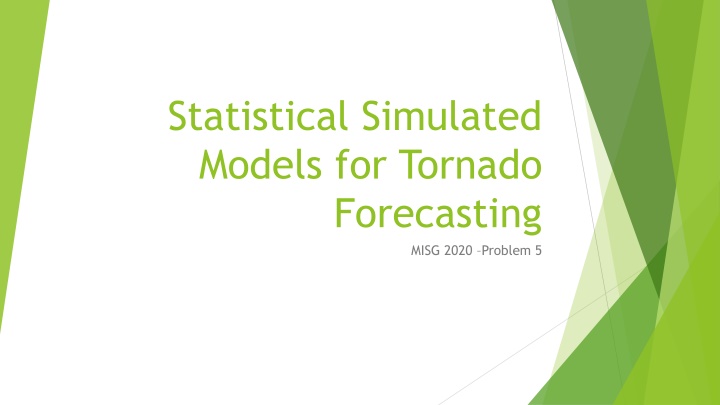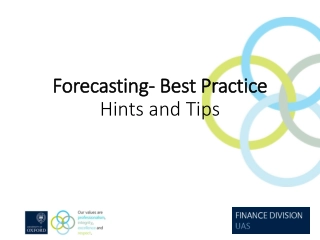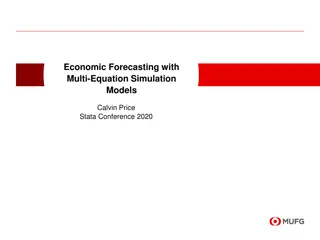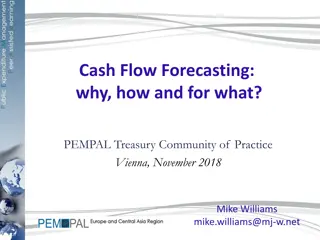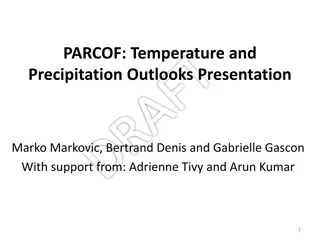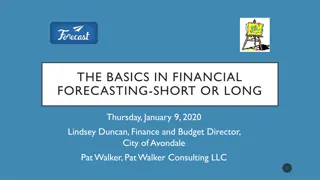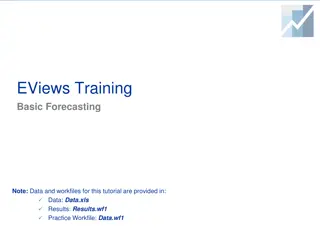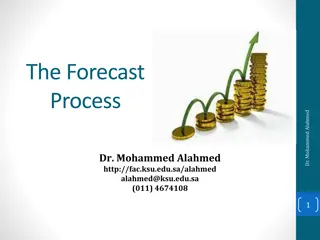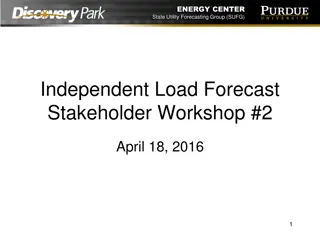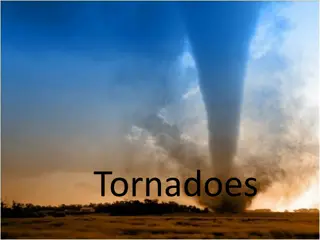Statistical Simulated Models for Tornado Forecasting
Tornado forecasting is crucial for disaster preparedness. This study focuses on fitting statistical models to historical tornado data to improve predictions. By using multivariable linear regression models and binary logistic equations, researchers aim to simulate tornado wind speeds and probabilities based on various predictors like circulation height and velocity. The ultimate goal is to enhance tornado forecasting accuracy.
Download Presentation

Please find below an Image/Link to download the presentation.
The content on the website is provided AS IS for your information and personal use only. It may not be sold, licensed, or shared on other websites without obtaining consent from the author.If you encounter any issues during the download, it is possible that the publisher has removed the file from their server.
You are allowed to download the files provided on this website for personal or commercial use, subject to the condition that they are used lawfully. All files are the property of their respective owners.
The content on the website is provided AS IS for your information and personal use only. It may not be sold, licensed, or shared on other websites without obtaining consent from the author.
E N D
Presentation Transcript
Statistical Simulated Models for Tornado Forecasting MISG 2020 Problem 5
Motivation Tornados are a major disaster, therefore accurate prediction of the event is an important research activity Long-range forecasts of severe convective storm activity is missing from seasonal forecasts such as how many storms can be expected along the a coastline etc. Predicting tornado activity prior to the start of season has gained lots of attention in research Because of large gaps in our knowledge of how climate influences severe weather and the lack of methods to forecast it on the seasonal scale , basic and applied research using statistical models are needed to predict severe weather conditions accurately
Objective Fit/simulate statistical models to the historical tornado database is recommended Within the current dynamic models for seasonal forecast events of interests like tornados are too small to be resolved In dynamic seasonal models the necessary conditions do not sufficiently distinguish between days with and without tornados In future study, two statistical models (Cohen, 2018, Simulating Tornado Probability and Tornado Wind Speed Based on Statistical Models ) which simulate tornado potential and wind speed are used to test the SA weather database during the time period of tornado activities in SA
Multivariable Linear Regression Models The statistical model for simulating tornado wind speed given a tornado is ? ? = ?? ??+ ? ?=1 where Y corresponds to the tornado wind speed simulated, Airepresents each of regression coefficients corresponding to the predictors Xi, m is the number of input predictors and B is the intercept value of the model The simulated Enhanced Fujita (EF) scale ratings can be determined from the simulated tornado wind speeds by assigning ratings 0,1, 2,3,4 and 5 to the simulated wind speed of 75mph, 123mph, 151mph, 183mph and 218mph
Multivariable Linear Regression Models A binary logistic equation is used to simulate tornado probabilities 1 ????? + ?] ? = 1 + ??? [ ?=1 (Pindyck and Rubinfield, 1981, Econometric Models and Economic Forecasts. 2nd ed. McGraw-Hill, 630 pp ) Predictors for simulating tornado probabilities and wind speed are Height of circulation above radar level Peak average of rotational velocity Circulation diameter Clear/tight characteristics of circulation
Conclusion Inputs from the independent data set can be used to statistically simulate the tornado probability and tornado wind speed for each of severe weather conditions Differences between values of performing the model on a dataset for which the known and unknown outcomes evaluate model for further improvements
